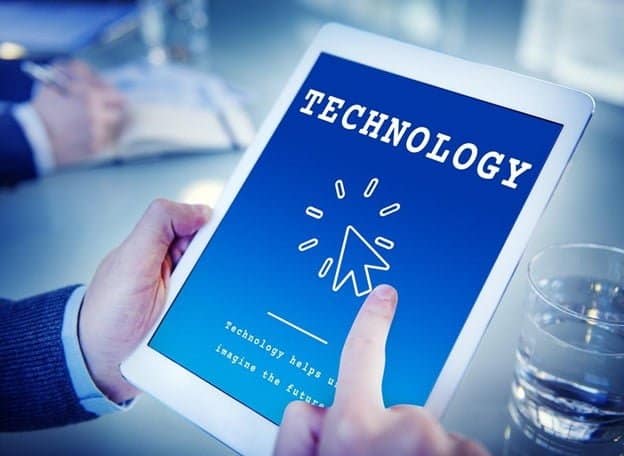Instructional technology is not new but has advanced.
Table of Contents
ToggleBack in the 1960s, Roger Appeldorn designed the first overhead projector. These technologies leveled the playing ground and opened doors to visual learning. In the early 1980s, schools adopted computer-aided education. The Internet gained momentum in the 1990s since many schools started creating web pages.
Since then, education technologies have significantly changed. In 2020, we are discussing the implementation of the cloud, artificial intelligence, virtual reality, and video conferencing in education. These tech solutions all fall within the scope of instructional technology.
What is instructional technology? What are its most prominent benefits?
What is Instructional Technology?
Instructional technology is not synonymous with digital education. It represents the practice of applying technology tools in education. Instructional technology encompasses a wide range of applications, from interactive whiteboards to online courses and augmented reality classrooms.
There are multiple benefits of instructional technology. It helps educators deliver highly engaging, interactive, and personalized learning experiences. Unlike traditional forms of education, instructional technology eliminates geographical boundaries, facilitates communication and collaboration, and enables faster access to information. Most importantly, it enhances the overall learning process since it is more flexible and adaptable to each learner’s individual needs and habits.
The Importance of Technology Advancements for Modern Classrooms
Modern technology has changed the approach to traditional education. According to a recent research study conducted by MidAmerica Nazarene University, only 42% of student work is done using paper and pencil. On the other hand, the use of technology in the classroom has gained momentum. Namely, 82% of educators claim that tech tools have enhanced learning and teaching.
The study also found that 86% of classrooms have Wi-Fi, while 73% of teachers say students use wearable technologies, such as laptops, smartphones, and tablets, daily.
The Use of Instructional Technology in Education
Schools can use instructional technology in multiple ways to support both teaching and learning processes. These tools enhance learners’ engagement, adapt to students’ diverse learning methods, and expand course offerings. While modern technologies benefit almost every aspect of education, we cherry-picked the key areas where they matter the most.
Delivering Engaging Learning Experiences
Digital video consumption is growing at an astonishing pace. In education, it delivers highly engaging, interactive, and personalized learner experiences. Video content helps students become more independent while learning, boosts their morale, and encourages them to do better.
Most importantly, video adapts to students’ learning pace and provides them with the time and resources to improve their desired skills. For example, say a learner is an avid basketball fan who wants to learn beyond their physical education class. With a wide range of online educational platforms, they can learn new basketball skills only by watching basketball instructional videos for free. The best thing about video content is that, if a student does not grasp the subject matter, they can watch the video lesson whenever they want.
The Rise of Virtual Learning
Since the outbreak of COVID-19, many educational institutions have decided to shift to online learning or combine virtual tools with traditional classroom experiences. Given that, it is not surprising that education-centered cloud computing is expected to reach $25 billion by 2021.
The best thing about using cloud technologies in education is that students are no longer limited to traditional textbooks and course materials. They now have access to a wide range of educational platforms. That way, they can enrich their knowledge and skills by enrolling in the courses their schools do not offer.
Cloud infrastructures also allow schools to create their virtual classrooms. With the help of these technologies, they can stream live videos, upload course materials to file-sharing platforms, and communicate with students instantly, irrespective of their location or devices.

Collaborative Learning
Modern technologies offer opportunities for collaborative learning. With the help of instant messaging applications and file-sharing systems, teachers and students can now collaborate and share files in real-time. Video conferencing platforms help them discuss ideas and work on projects together.
Many cloud-based tools allow educators to monitor and measure learners’ attendance, engagement, and performance. These tools eliminate the constraints of a traditional classroom, such as geolocation or classroom hours.
Collecting Real-Time Feedback
With the rise of instructional technology, educators are not limited to traditional evaluation methods anymore. They can now communicate with students in real-time to assess their progress. For example, when they schedule an online lecture, a teacher can create an online survey to know where their students are in that lesson. By monitoring learners’ engagement, performance, and understanding of the matter, they will be able to improve the effectiveness of their lectures in the future.
Ready to Start Using Instructional Technology?
Instructional technology provides unparalleled benefits for both teachers and students. It is highly student-centric, making the learning process more relevant and personalized. Sure, the goal is to choose the right technologies, depending on your students’ requirements.
Summary:
Instructional Technology
In 2020, we are discussing the implementation of the cloud, artificial intelligence, virtual reality, and video conferencing in education. These tech solutions all fall within the scope of instructional technology. Instructional technology is not synonymous with digital education. It represents the practice of applying technology tools in education. There are multiple benefits of instructional technology. It helps educators deliver highly engaging, interactive, and personalized learning experiences. Schools can use instructional technology in multiple ways to support both teaching and learning processes. Since the outbreak of COVID-19, many educational institutions have decided to shift to online learning or combine virtual tools with traditional classroom experiences. Modern technologies offer opportunities for collaborative learning. With the rise of instructional technology, educators are not limited to traditional evaluation methods anymore. They can now communicate with students in real-time to assess their progress.





